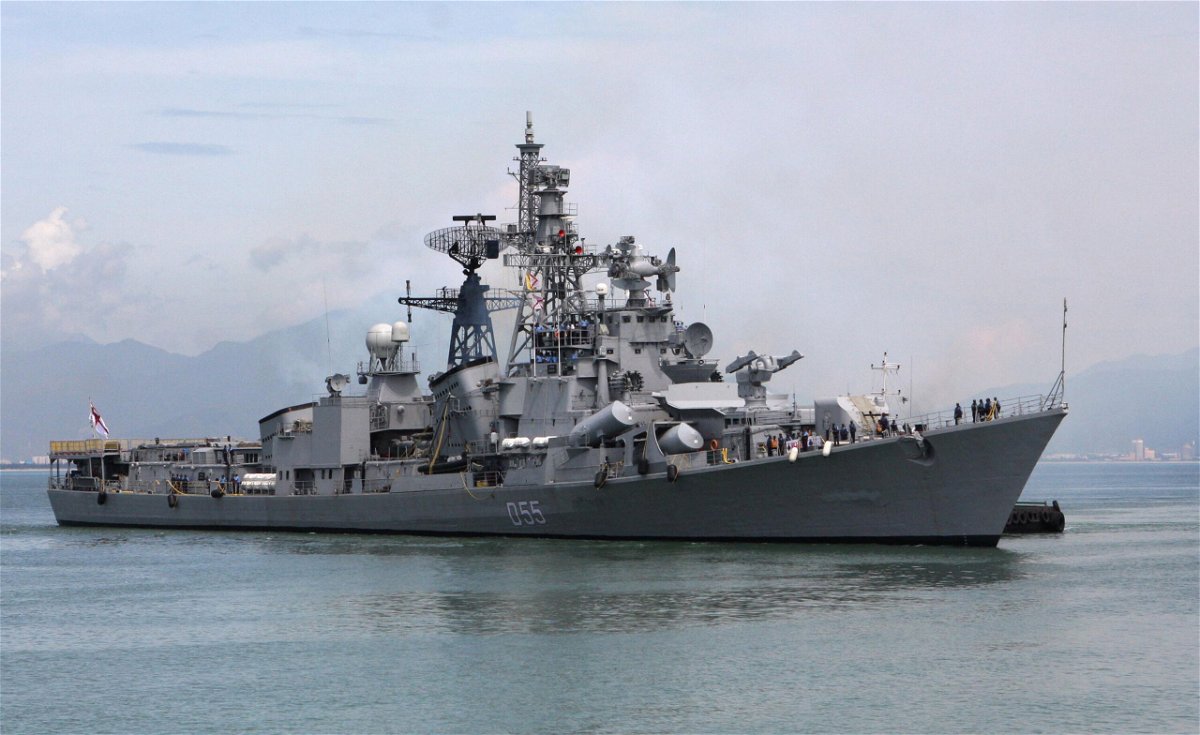India to deploy naval task force into South China Sea and beyond

This picture taken on June 4
By Brad Lendon, CNN
India is sending a task force of four warships into the South China Sea on a two-month deployment that will include exercises with Quad partners the United States, Japan and Australia, India’s Defense Ministry announced Monday.
The warships will depart India early this month, the Defense Ministry statement said, without giving a specific departure date.
The task force, which includes a guided-missile destroyer, guided missile frigate, anti-submarine corvette and guided-missile corvette, will participate in a series of exercises during the two-month deployment, including the Malabar 2021 naval exercises with US, Japanese and Australian forces.
In other bilateral exercises during the deployment, the Indian warships will work with naval units from South China Sea littoral states, including Singapore, Vietnam, Indonesia and the Philippines, the Defense Ministry said.
“These maritime initiatives enhance synergy and coordination between the Indian Navy and friendly countries, based on common maritime interests and commitment towards Freedom of Navigation at sea,” the Indian statement said.
The South China Sea has become a hotbed of naval activity in recent weeks. Last week, a British aircraft carrier strike group transited the 1.3 million square mile waterway, while an American surface action group, and forces from China’s People’s Liberation Army staged exercises in it.
Beijing claims almost all of the South China Sea as its sovereign territory, turning numerous obscure reefs and sandbars throughout the waterway into man-made artificial islands heavily fortified with missiles, runways and weapons systems.
Collin Koh, a research fellow at the S. Rajaratnam School of International Studies in Singapore specializing in naval affairs, said the Indian deployment, a version of which he said is done annually, is “India’s most visible ‘show of flag’ naval presence east of the Malacca Strait.”
But Koh said he doesn’t expect the Indian ships to be confrontational, or undertake any freedom-of-navigation operations near Chinese-claimed islands in the South China Sea.
“The mere presence of the ships in the South China Sea, even if outside the 12 (nautical mile) limit of each Chinese-occupied feature, would have sufficed to meet New Delhi’s strategic objectives of signaling its intention to remain engaged in the Western Pacific,” Koh said.
Likely reaction
China regularly decries the presence of foreign naval forces in the South China Sea. Prior to the recent deployment of Britain’s Carrier Strike Group, Chinese state-media accused the United Kingdom of attempting to relive the “glory days of the British Empire” while trying to stir up trouble at the behest of the US.
Since taking office, US President Joe Biden has placed renewed focus on Asia, positioning it as the foundation of his foreign policy agenda. The Biden administration has welcomed the presence of democratic allies and partners in the region, amid efforts to counter Beijing.
Speaking during a visit to Singapore last month, US Defense Secretary Lloyd Austin underscored the importance of increased cooperation. “I’m especially encouraged to see our friends building stronger security ties with one another, further reinforcing the array of partnerships that keeps aggression at bay,” said Austin.
India’s statement on the four-warship deployment echoed the US defense chief.
“Besides regular port calls, the task group will operate in conjunction with friendly navies, to build military relations and develop interoperability in the conduct of maritime operations,” it said.
Indian relations with China cratered last year after a deadly clash between ground troops from the two neighbors over disputed territory in the Himalayas.
At least 20 Indian and four Chinese troops were killed in hand-to-hand combat.
Since the incident, India has looked to reaffirm links with the Quad, an informal security relationship between the US, Japan, India and Australia.
After a virtual summit of the leaders of those countries in March, the four authored an opinion column in the Washington Post.
The alliance said it is trying to “ensure that the Indo-Pacific is accessible and dynamic, governed by international law and bedrock principles such as freedom of navigation and peaceful resolution of disputes, and that all countries are able to make their own political choices, free from coercion,” it said.
Monday’s Indian statement touched on those themes.
“The deployment of the Indian Navy ships seeks to underscore the operational reach, peaceful presence and solidarity with friendly countries towards ensuring good order in the maritime domain and to strengthen existing bonds between India and countries of the Indo Pacific,” it said.
The-CNN-Wire
™ & © 2021 Cable News Network, Inc., a WarnerMedia Company. All rights reserved.